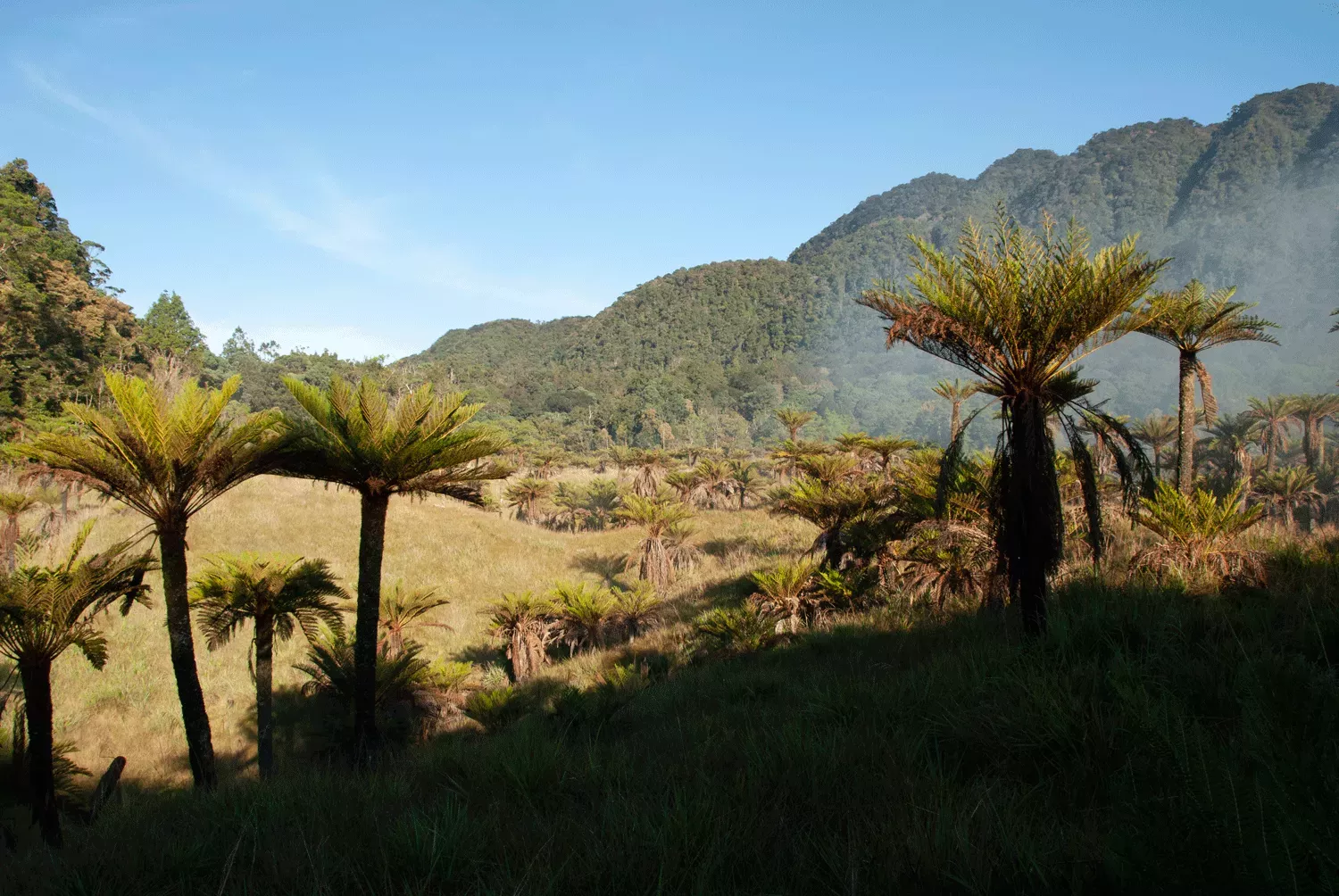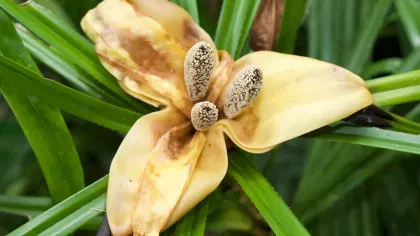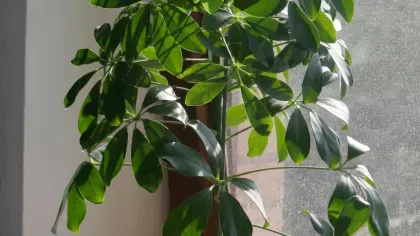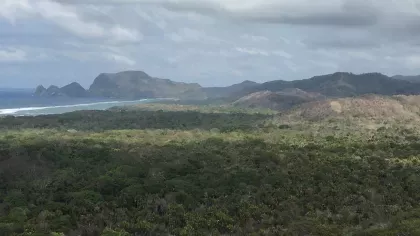10 November 2020
The tremendous tree ferns of New Guinea
From Chelsea Flower Show to New Guinea...

Tree ferns are a Chelsea Flower Show staple. But there is more to them than the one species, Dicksonia antarctica, which is commonly grown in the UK.

Tropical treasures
There are over 600 species of tree ferns found in tropical areas in South America and South East Asia.
The island of New Guinea is a tree fern hotspot with 120 species from the tree fern families Cyatheaceae and Dicksoniaceae; over two thirds of these species are endemic to New Guinea and the surrounding small islands.
Before our project began, little was known of the threats to tree ferns in New Guinea and no species had yet been assessed for the IUCN Red List.
We aimed to discover which tree ferns were threatened and where they occurred to support Kew’s project identifying Tropical Important Plant Areas in Indonesian New Guinea to help inform their protection.

An island teeming with life
New Guinea has been described as a ‘paradise island’.
It’s the world’s largest tropical island and recent research led by Kew has shown that it is the most diverse island for plants with over 13,000 species present.
The main island consists of the independent country of Papua New Guinea in the east, and two provinces of Indonesia (Papua and Papua Barat) in the west.
Most New Guinea tree ferns occur in montane rainforest or alpine grasslands which are found across the centre of the main island, or they occur in lowland rainforest on many of the surrounding smaller islands.
Many of the places tree ferns occur in are very difficult for botanists to reach, with no roads and steep mountainous forests.
Botanist Carl Ledermann collected many tree ferns in the April River area in 1912 and 1913 (in Papua New Guinea), an area so remote that even 100 years later it has never been visited again by tree fern specialists.
Troublesome trees
Many tree ferns are poorly represented in herbaria due to their large size and the difficulties in their identification.
Tree ferns consist of a main fuzzy "tree trunk” with a large headdress of fern leaves (fronds) at the top. However, the trunk isn’t woody like a typical tree but consists of a fibrous mass of old bases of the fronds and roots.
Some species have trunks up to 10 m high with individual fronds up to 2 m long which makes them very tricky to fit in a botanist’s plant press.
Identification of individual species is also difficult with specialists needing to study the scales, hairs and sori (spore producing structures) on the underside of their leaves.
Luckily, in Kew's Herbarium we have a good collection of New Guinea tree fern specimens and new specimens from recent fieldwork to the island by tree fern specialists from the University of Bonn and the University of Zurich.

Special flora
The good news is that over 70% of tree ferns were assessed as Least Concern (i.e. not currently known to be threatened), mainly because they have wide geographic ranges across New Guinea and occur in remote areas not yet threatened by human activities.
However, many forests in New Guinea have been proposed as new logging concessions which would have a huge impact on tree ferns if they were to go ahead.
Ten species of tree ferns were assessed as threatened or near threatened, mainly because they are restricted to small areas near mines or found on small islands with high pressures to lowland forests from subsistence agriculture or oil palm plantations.
Many tree ferns remain hardly known, with 20% of species being assessed as Data Deficient due to limited information available on their geographic range; many species have only been collected once and new surveys for these species are urgently needed.
Our tree fern Red List assessments will contribute to the Plant Assessment Unit’s ongoing focus on assessing New Guinea’s plants.
There is still so much to discover on the island, and it is hoped these assessments will contribute to the protection of this special flora.
Acknowledgements
Thanks to Rodrigo Cámara-Leret, Marcus Lehnert and Michael Kessler for their research and support to the project.
This work was supported by the IUCN and Toyota Motor Corporation through the project “The IUCN Red List of Threatened Species and Toyota Motor Corporation”.
References
Cámara-Leret, R., Frodin, D.G., Adema, F. et al. (2020). New Guinea has the world’s richest island flora. Nature 584: 579–583.



